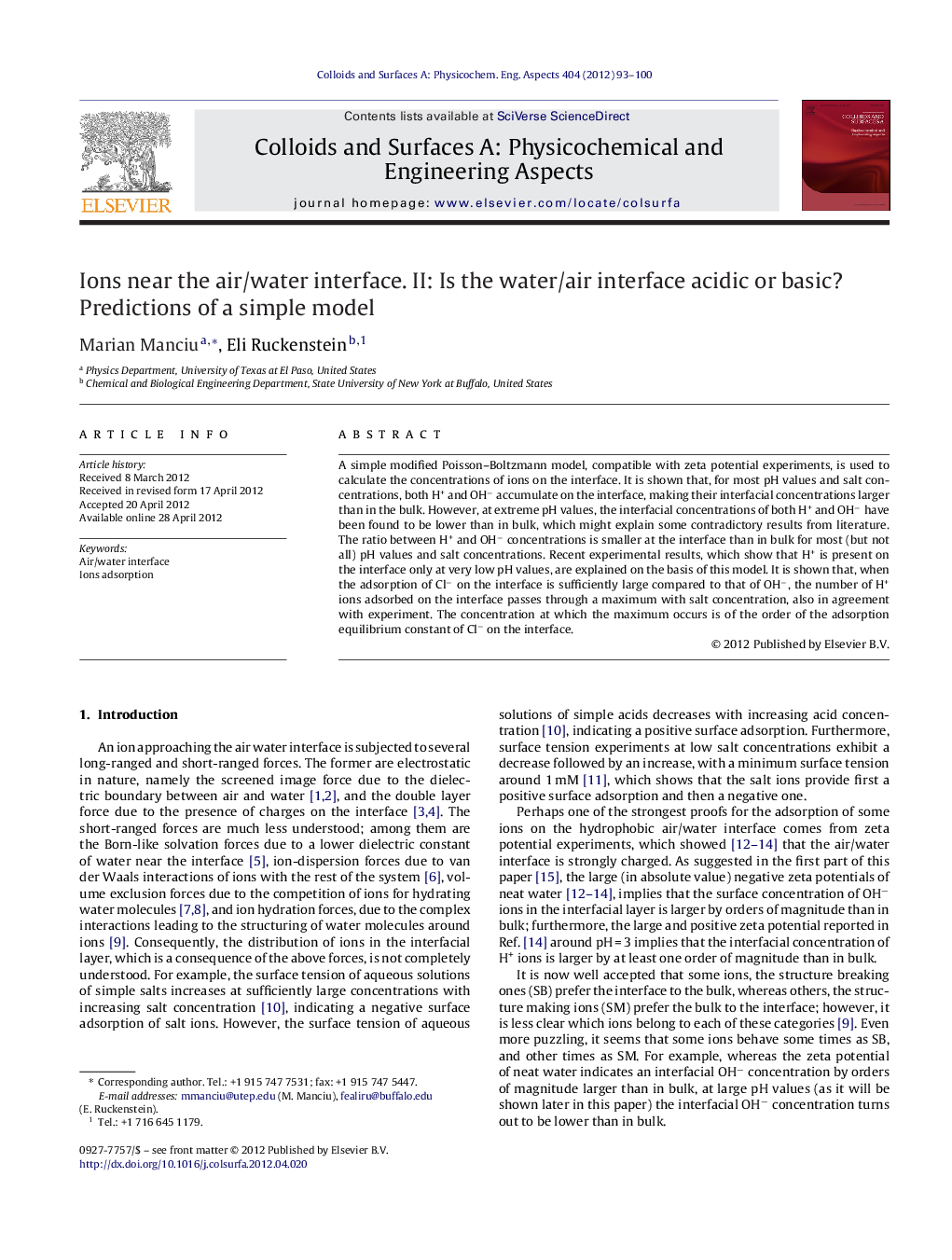| Article ID | Journal | Published Year | Pages | File Type |
|---|---|---|---|---|
| 594115 | Colloids and Surfaces A: Physicochemical and Engineering Aspects | 2012 | 8 Pages |
A simple modified Poisson–Boltzmann model, compatible with zeta potential experiments, is used to calculate the concentrations of ions on the interface. It is shown that, for most pH values and salt concentrations, both H+ and OH− accumulate on the interface, making their interfacial concentrations larger than in the bulk. However, at extreme pH values, the interfacial concentrations of both H+ and OH− have been found to be lower than in bulk, which might explain some contradictory results from literature. The ratio between H+ and OH− concentrations is smaller at the interface than in bulk for most (but not all) pH values and salt concentrations. Recent experimental results, which show that H+ is present on the interface only at very low pH values, are explained on the basis of this model. It is shown that, when the adsorption of Cl− on the interface is sufficiently large compared to that of OH−, the number of H+ ions adsorbed on the interface passes through a maximum with salt concentration, also in agreement with experiment. The concentration at which the maximum occurs is of the order of the adsorption equilibrium constant of Cl− on the interface.
Graphical abstractFigure optionsDownload full-size imageDownload as PowerPoint slideHighlights► At low pHs, the interfacial H+ concentration cint,H is smaller than in bulk. ► At large pHs, the interfacial OH− concentration cint,OH is smaller than in bulk. ► However, in most cases, cint,H and cint,OH are larger than the bulk values. ► The ratio cint,H/cint,OH is smaller than the bulk ratio c0,H/c0,OH in most cases. ► The maximum cint,H at pH = 7 is obtained for a salt concentration cS ∼ KCl.
